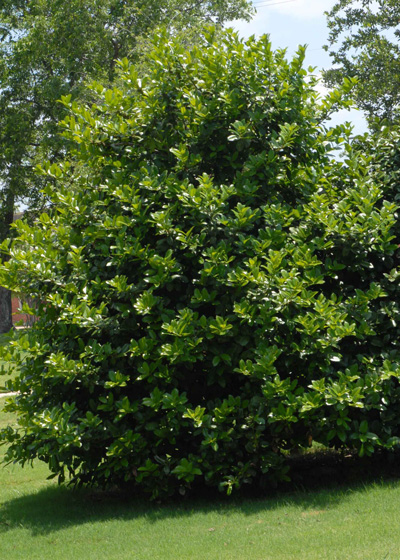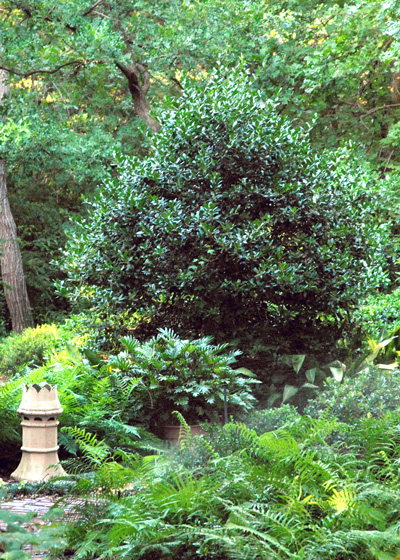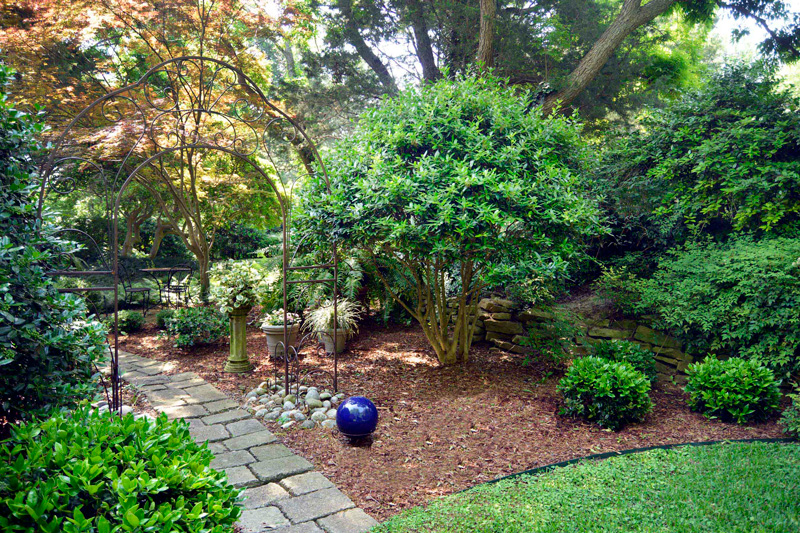Best Replacements for Redtips
It’s a story that needs to be told often. Redtip photinias are highly susceptible to a fungal leaf spot for which we have no preventive treatment and for which there is no cure.
Put in shorter terms: Don’t plant them!
So, what’s the best replacement? I’ll list my three recommendations.
Needlepoint holly
Also known as Willowleaf holly, this is a variation of regular Burford holly. It’s much more relaxed in its habit of growth, however. Mature height is 10-12 ft. and width 8-10 ft. (Larger in the ideal conditions of East Texas.) It bears large red berries each winter. It’s a stellar shrub in both sun and shade.

Oakland holly
If you’re looking for a rather formal, pyramidal holly, this might be your best choice. It grows to 10-12 ft. tall and 8 ft. wide. (Larger in the ideal conditions of East Texas.) Its leaves are toothed and handsome, although they’re not especially prickly. It, too, is suited to both sun and shade. It grows somewhat more slowly than the other plants listed in my experience. It does not bear fruit.

Nellie R. Stevens holly
This is a glorious large screening shrub that grows to be 14-20 ft. tall and 12 ft. wide. (Largest in the ideal conditions of East Texas.) Its leaves are boldly dark green, and its berries are large and deep red. They persist all winter until finished off by the migrating birds of early spring. If you need a tall screen, this is the best. Set plants 8-10 ft. apart in their rows. Sun or shade.
Other plants you might consider…
These are certainly not the only shrubs that could offer you privacy and good looks. I just felt that they were the ones that would be most widely adapted over the entire state of Texas.
Yaupon holly is a lovely native, but it’s hard to find in shrub form in large sizes. It’s more commonly trained as a small accent tree. If you do decide to use it, buy cutting-grown plants so you can be sure you’re getting female (fruit-producing) specimens.
Cherry laurels and several of the American holly hybrids would be good for the acidic soils of East Texas.
Eastern redcedar junipers (but not Leyland cypresses) could be good almost anywhere that a tall screen (to 30 ft. tall) was needed.
Do not use bamboo (too invasive), and waxleaf ligustrum, once a favorite for screening hedges, froze in 2021 and has fallen from favor.
Wax myrtles might be fine in East Texas, but they have short life expectancies outside the acidic soils of that area.

